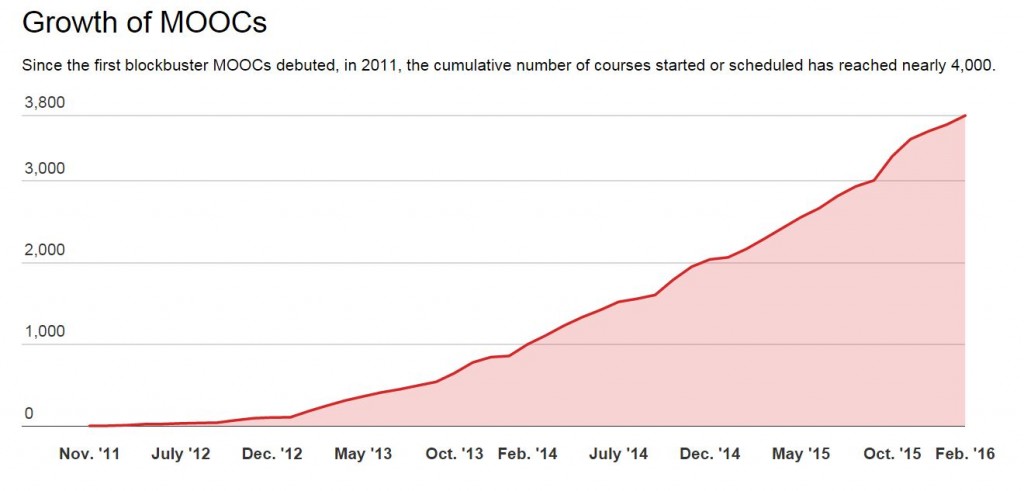MOOCs, or Massive Open Online Courses, are proliferating.
Four years ago when Stanford launched one of the first MOOCs, there were a total of 10 courses to choose from worldwide. Today, the Chronicle of Higher Education reports there are nearly 4,000.
According to this English major’s math, that’s an almost 34,000-percent increase in the number of courses available to anyone with an Internet connection. The most popular MOOCs include introductory statistics and computer science, as well as classes in business and management.
Critics like to point out that, on average, only 15 percent of the millions of people who enroll in MOOCs ever complete their coursework, but let’s look at the bright side. That’s hundreds of thousands of motivated, self-starters who decided to learn more about a topic of interest to them. MOOCs have shown them a path to additional education and new career possibilities that were not open to them just a few years ago.
“That growth curve tells you volumes about the number of people that are seeing value,” says Richard A. DeMillo, director of the Center for 21st Century Universities at the Georgia Institute of Technology.
Like the Internet itself, MOOCs will only get better. Technology advances, and longer experience in the marketplace, will see to it. Efforts to offer recognized academic credentials also will increase MOOC value.
The number of MOOCs may not rise as exponentially again in the next four years, but their evolution promises to be intriguing.

